Ban Gioc Waterfall, China called Duc Thien-Ban Uoc waterfall pair (Chinese: 德 天 – 板 約; pinyin: Détiān – Bǎnyuē), is one or two waterfalls located on the Quay Son River at the border between Vietnam and China. If viewed from the bottom of the waterfall, the left and the western half of the waterfall on the right belong to the sovereignty of Vietnam in Dam Thuy commune, Trung Khanh district, Cao Bang province; the eastern half of the right waterfall belongs to the Chinese sovereignty in Duc Thien village, Thac Long town, Dai Tan district, Sung Ta city of Guangxi Choang ethnic autonomous region. This waterfall is about 20 km northeast of Chongqing district capital, about 208 km from Nanning capital of Guangxi.
Table of Contents
Introduction to Ban Gioc Waterfall
Ban Gioc waterfall is located on the flow of Quay Son River (歸 春 河, Sino-Vietnamese sound is “Quy Xuan Ha”). This river originates in China, flows towards the border of the two countries, and then enters the Vietnamese territory at Po Peo in Ngoc Khe commune, Trung Khanh district. From Ngoc Khe commune, the river flows through Dinh Phong and Chi Vien communes. When reaching Dam Thuy commune, the river glides around at the foot of Co Muong mountain, then through the fields of Dam Thuy, through the cornfield on Gioc village, back again. The border then splits into several branches. The riverbed there suddenly fell about 35 m, forming Ban Gioc waterfall. After falling at the foot of the waterfall, the river turned completely into Chinese territory.
In the middle of the waterfall is a large mound of land covered with trees, splitting the river into three streams of water. On sunny days, the steam coming out of the waterfall forms a rainbow. At the foot of the waterfall is a wide river surface with two banks of grass and forest patches. About 5 km away from the waterfall, there is Nguom Ngao cave, 3 km long.
In the middle of the waterfall is the Vietnam-China border landmark. This milestone is determined through the 1999 border treaty between the two countries as milestone 53 built by France – Thanh. According to the 1999 treaty, the sub-waterfall completely belonged to Vietnam, the main waterfall was divided in two.
According to the Chinese point of view, the main waterfall and the secondary waterfall are two separate falls, the main waterfall (Duc Thien) has a width of 100 m, a depth of 60 m, and an altitude of 70 m. From the point of view of the Vietnamese side, Ban Gioc waterfall includes both the main and sub-falls with a total width of 208 m. Ban Gioc waterfall is divided into two parts, the part in the south is called Cao waterfall, this is a secondary waterfall because the amount of water is not large. Low Falls is the main waterfall located in the North on the Vietnam-China border.
Ban Gioc Falls is the world’s fourth-largest waterfall among waterfalls located on a border between countries (After Iguazu falls between Brazil – Argentina, Victoria Falls is located between Zambia – Zimbabwe; and Niagara Falls between Canada and the United States of America. ). However, according to Xinhua, Ban Gioc waterfall is the second largest transnational waterfall in the world and is the largest natural waterfall in Southeast Asia.
What beautiful season to go to Ban Gioc waterfall
Before going, many of you try hard to find out what season to go to Ban Gioc Waterfall, which season to go to Ban Gioc Waterfall is the most beautiful? You only need to pay attention to see, if you go to the waterfall, you have to go in the rainy season, at which time the amount of water pouring from the source will be much, making the waterfall shimmering and fanciful. The rainy season in Cao Bang in particular and the Northern mountainous provinces, in general, are usually in summer, from June to September. Therefore, choosing to go to Ban Gioc in this season will be nicer, but because of the rainy season in the region. The North often brings flash floods quite dangerous, so if you go, you should choose the time after the rainy period ends to be safe.
Guide to Ban Gioc Waterfall
About 400km from Hanoi, traveling by motorbike Ban Gioc will be an interesting choice for large groups of people, by motorbike you can also combine Ha Giang or Mau Son to do around an arc
Ban Gioc waterfall tour by motorbike
Going by motorbike you also have 2 options. If you bring a motorbike from Hanoi, you can go to Ban Gioc in 2 weekends, departing from Friday evening (however if it is much more comfortable for 3 days) according to the schedule Hanoi – Bac Kan – Cao Bang – Trung Khanh – Ban Gioc Waterfall – Cao Bang – That Khe – Lang Son – Hanoi.
If you do not want to ride a motorbike from Hanoi, you can take a passenger bus to get to Cao Bang city, if you get there, rent a motorbike in Cao Bang city and then go to Ban Gioc waterfall, then return and return the car. Getting on the car back to Hanoi, this way is more leisurely, but going like that is a bit boring. You can send motorbikes and cars to Cao Bang from Friday evening, on Saturday morning, you will be in Cao Bang and then to Ban Gioc.
Ban Gioc waterfall tour by bus
This option is suitable for those who cannot ride a motorcycle, especially a group of girls traveling together. From Hanoi, you take a bus to the city of Cao Bang, next from here you ride Thanh Luan with the schedule of Cao Bang – Nguom Ngao Cave – Ban Gioc Waterfall. The bus runs continuously from 6:30 to 15:30 with frequency Each trip is about 1 hour apart, the last one from Ban Gioc is about 14 o’clock so you need to pay attention.
If you do not want to change your car in Cao Bang City, you can ride Vinh Dung to Trung Khanh market and then take a motorbike taxi to Ngom Ngao and Ban Gioc.
Staying while Traveling Ban Gioc Waterfall?
Homestay in Ban Gioc Waterfall
Currently, at the Ban Gioc waterfall area, there is a 4-star Saigon – Ban Gioc resort of Saigon Tourist, if possible, you can book a hotel room and stay here. This resort is about 700m from Ban Gioc waterfall so it’s quite convenient.
Ban Gioc Waterfall area currently has quite a few people providing homestay services to serve tourists, including accommodation and catering services. If you come here to learn the culture of the indigenous people, you can choose to stay at a homestay, which is very reasonable.
Hotel motels in Chongqing
Alternatively, you can stay overnight in Chongqing and then the next morning run to Ban Gioc waterfall (about more than 20km).
What to play while hiking Ban Gioc Waterfall
It’s clear that you only play at the waterfall, right? However, on the way to Ban Gioc, there are quite a few interesting spots that you can combine to go with you, rarely have the opportunity to travel to Cao Bang
Thang Hen Lake
Located in Quoc Toan Commune, Tra Linh district, Cao Bang province at an altitude of thousands of meters above sea level. Thang Hen Lake is a beautiful lake among 36 large and small lakes in the mountainous areas of Tra Linh district. Located in the middle of a mountainous region and the green color of trees reaching over cliffs reflecting into the clear water, winding along with the valley bedside quarries. Thang Hen Lake is diamond-shaped, 100m to 300m wide, and 500m to 1,000m long. Upstream is a large cave, from the cave, water flows out day and night. It is especially interesting when the people here say that every 10 years, suddenly the water of Thang Hen Lake is almost dry and after a few days the water rises again. And even more impressive is that during the flood season, Thang Hen Lake still retains its distinctive emerald green color, while other lakes in the region turn bright red.
Thang Hen Lake has a very interesting legend. According to folk legend, in the old days in Cao Bang, there was a young and intelligent man named Sung. He passed the exam to become a mandarin and was rewarded with seven days of honor by the king. Back home, he married a beautiful girl named Booc. Intrigued by his beautiful newlywed wife, he forgot the day he returned to the business. Only on Saturday night, he suddenly remembers to bid farewell to his wife and parents and ran back to the Sutra. In the middle of the night in the wilderness, he ran 36 steps, then fell his head and hit the mountain, and died. His 36 steps today are 36 large and small lakes with different names for the dialects of Tra Linh district. Legend has it that the place where he lay down is today’s Thang Hen Lake.
Nguom Ngao Cave
Nguom Ngao Cave is located in Gun village, Dam Thuy commune, Trung Khanh district, Cao Bang province. The cave has a length of 2,144m. The cave consists of three main doors: Ngom Ngao, Ngom Lom (ie wind door, cool all year round), and Ban Thuon door behind the mountain in Ban Thuon.
According to the Tay language, “Ngom” is “cave”, “clam” is “tiger”; “Nguom Ngao” means tiger cave. Nguom Ngao Cave is divided into three main areas: The Four Heavenly Pillars, the Central, and the Treasure Area. Nguom Ngao has an extremely interesting beauty created by layers of splendid stalactites, glowing gold. The colorful stalactites grow from below, from above the high arches of rock, with many beautiful shapes reflecting shimmering light.
Buddhist Temple Tich Truc Lam Ban Gioc
Buddhist Temple Tich Truc Lam Ban Gioc – the first temple built on the northern border of the country was approved by the People’s Committee of Cao Bang province to build. In June 2013, the pagoda of Tich Truc Lam Ban Gioc was started at Phia Nhoc mountain, 500m from Ban Gioc waterfall. Items of Tich Truc Lam Ban Gioc Buddhist pagoda such as Tam Quan pagoda, Bodhisattva statue floor, Tam Bao, ancestral house,… are built in traditional Vietnamese Buddhist architectural style.
There is also a temple to the hero Nung Tri Cao – a figure and symbol of culture in the eleventh century in Cao Bang. The project was built on an area of 2 hectares with a budget of about 38 billion VND, mainly from the socialization source mobilized by the Central Vietnam Buddhist Church, contributed and sponsored by corporations and donors.
Vietnam – China border landmark
Out of 1,971 landmarks set up in the 7 northern border provinces, Cao Bang has the most landmarks (634 landmarks), so it is called the province with a ‘milestone strength’ – a strength that has to be exchanged for many sweat, bones, and blood. You love to check in with border landmarks that can be referenced and combined when traveling to Cao Bang. The area of Ban Gioc waterfall currently has landmarks 835 and 836 that you can easily access to take pictures without asking permission like other areas (along the banks of the Quay Son river you can also easily find a lot. This landmark runs along the riverbank, this is the natural border between the two countries).
What to eat when traveling to Ban Gioc Waterfall
As one of the famous tourist destinations of Cao Bang, Ban Gioc waterfall also has a full range of Cao Bang delicious dishes that you can enjoy during your journey. In addition, Ban Gioc waterfall also has a special dish, Tram Huong fish. This is a famous fish species in the waterfall. Previously, there were many frankincense fish at the bottom of the waterfall. People easily catch and sell a lot in the Chongqing market. However, today this fish is less and less a specialty.
Called frankincense fish because this fish often eats the roots and rotting leaves of the agarwood tree growing along the Quay Son and Bac Vong rivers. Therefore, their meat is more delicious than many other types of fish, when eaten, you can feel the deep taste.
The best dish from frankincense fish is grilled, because it retains the taste of the fish, making gourmets admire. Fish caught from the river, cleaned, cut the belly, and then stuffed some more vegetables and spices such as onions, dill, chili,… put inside a fish and wrapped with banana leaves, and then put on a charcoal grill.
When cooked, the fish radiates a sobbing fragrance. Remove the dotted fish with a little pure fish sauce, feel the aroma of ecstasy, a subtle hint of taste that makes you remember forever.
Schedule to go to Ban Gioc Waterfall
Tour 1: Hanoi – Ba Be – Cao Bang – Ban Gioc
On this schedule, you go from Hanoi in the direction of National Highway 3 to Thai Nguyen Bac Can, stop by Ba Be Lake, run through Wind Pass, Giang Pass, and then to Cao Bang City.
Day 1: Hanoi – Ba Be
From Hanoi, depart for Bac Kan and stop at Ba Be, along the way, if you want you can visit some tourist destinations in Thai Nguyen. Overnight in Ba Be, you can choose to stay at the homestay in Pac Ngoi village
Day 2: Ba Be – Cao Bang City – Pac Bo – Cao Bang City
In the morning from Ba Be, depart for Cao Bang City, where you can choose a place to spend the evening, refer to the list of hotels and motels in Cao Bang City and then leave your belongings at the hotel. From here, continue to Pac Bo, after visiting, come back to Cao Bang City.
Day 3: Cao Bang City – Trung Khanh – Ban Gioc Waterfall
From Cao Bang City, go straight to Ban Gioc Waterfall, you can visit the Ta Lung border gate, visit some border landmarks in Cao Bang. Then go up to Chongqing, stop by Ngom Ngao cave, Truc Lam Zen Monastery, then go to Ban Gioc Waterfall. From here, back to Cao Bang city to rest
Day 4: Chongqing – Cao Bang – Hanoi
This day departs early from Cao Bang city back to Hanoi.
Tour 2: Hanoi – Mau Son – Ban Gioc – Ba Be – Hanoi
This itinerary combines traveling to Lang Son and then going to Cao Bang, then back to Hanoi via Bac Kan – Thai Nguyen, forming a circular arc.
Day 1: Hanoi – Lang Son – Mau Son
The first day, departing from Hanoi, you follow Lang Son Street and then go to the top of Mau Son, and sleep at Mau Son
Day 2: Mau Son – That Khe – Cao Bang City – Chongqing
In the morning, you can spend some time exploring Mau Son peak, then you can go from Mau Son to Dong Dang and then to That Khe to go to Cao Bang. Along this road, there are several tourist attractions in Lang Son such as Thuy Mon Dinh Beer, Huu Nghi border gate, Mau Dong Dang Temple that you can arrange to visit too. Go straight through Cao Bang city and go straight to Trung Khanh for the next day to go to Ban Gioc for convenience.
Day 3: Chongqing – Ban Gioc Waterfall – Nguom Ngao Cave – Cao Bang City – Highway 3 – Ba Be Lake
This day, you walk around Ban Gioc Waterfall, Nguom Ngao cave, some nearby tourist attractions, and around early afternoon go back to National Road 3 to Ba Be, sleep in Ba Be at night
Day 4: Ba Be – Hanoi
Spend about half a day exploring Ba Be and then back from here to Hanoi
Related Article: Discover Ha Giang cuisine with irresistible delicacies
Let start your trip to Ban Gioc Waterfall with us! If you have any feedback or need help, please send it an email through vietnamreviewer.contact@gmail.com!
Noted: All information and pictures are collected!

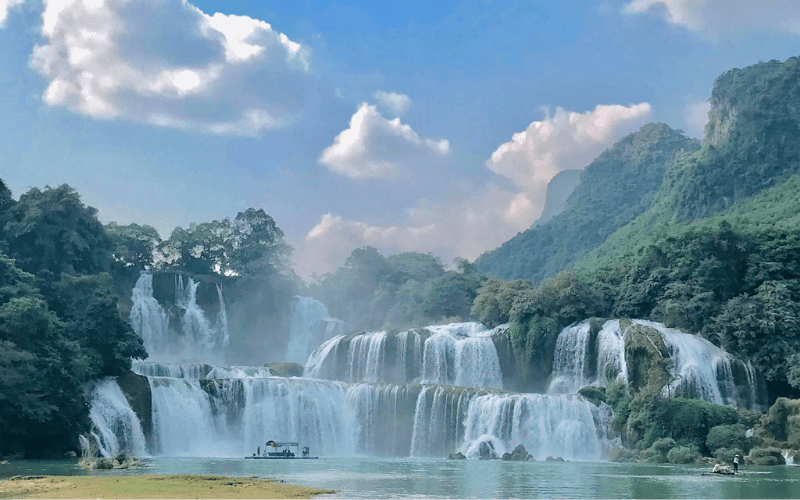
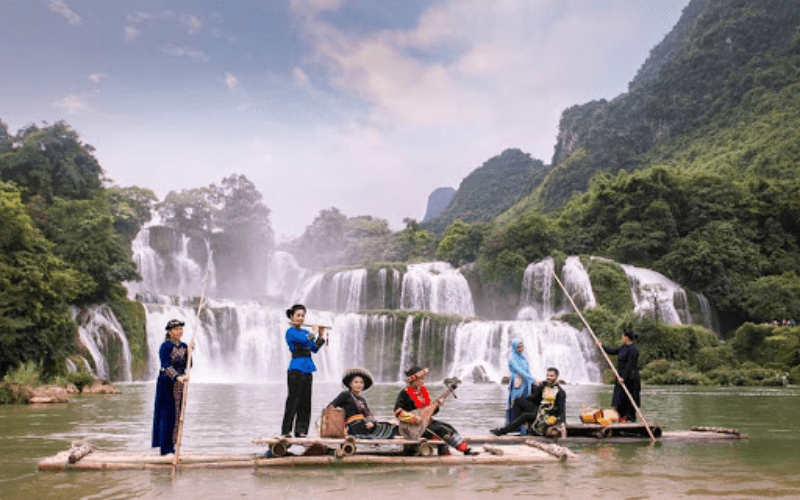
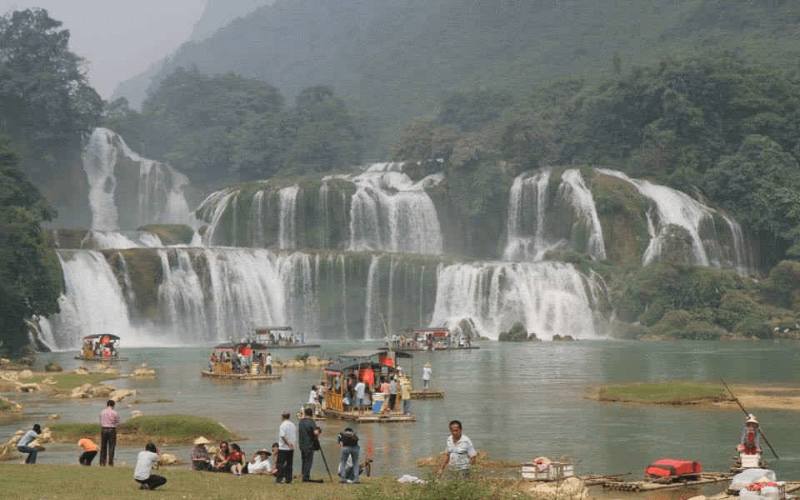
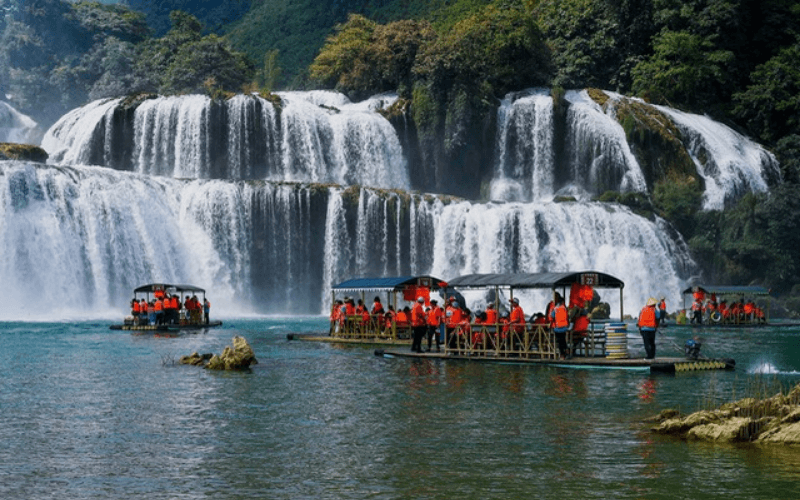
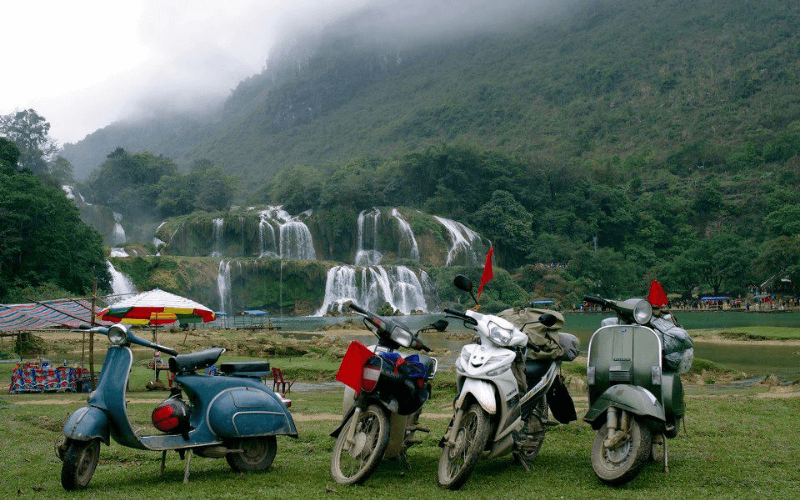
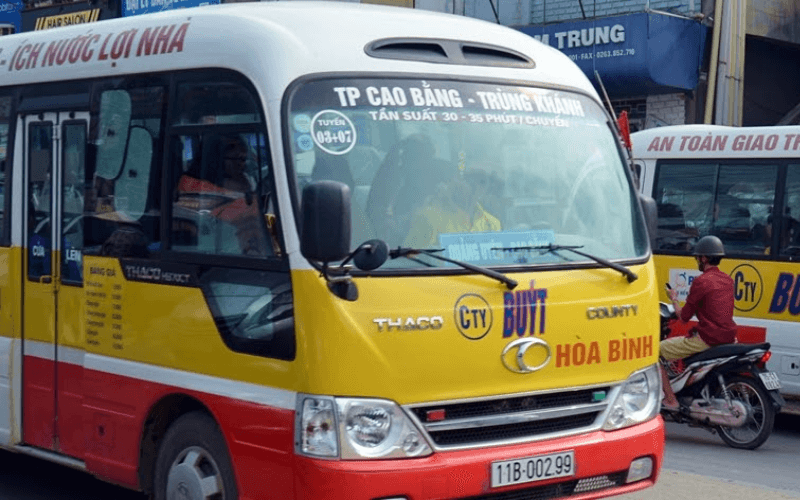
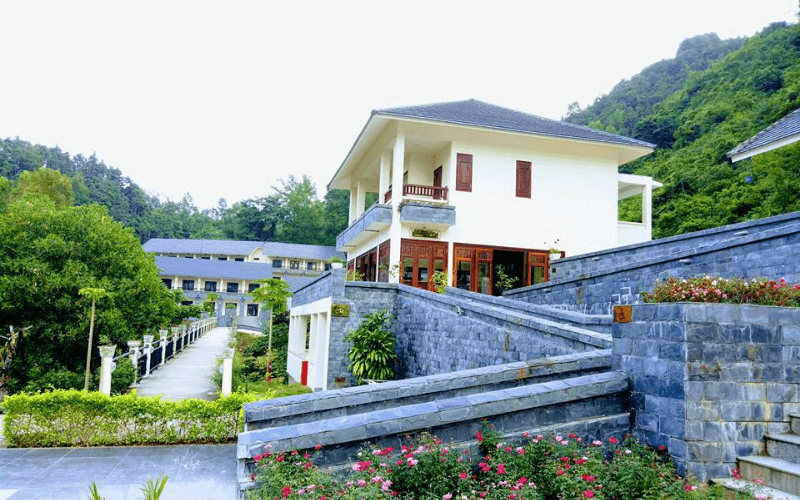
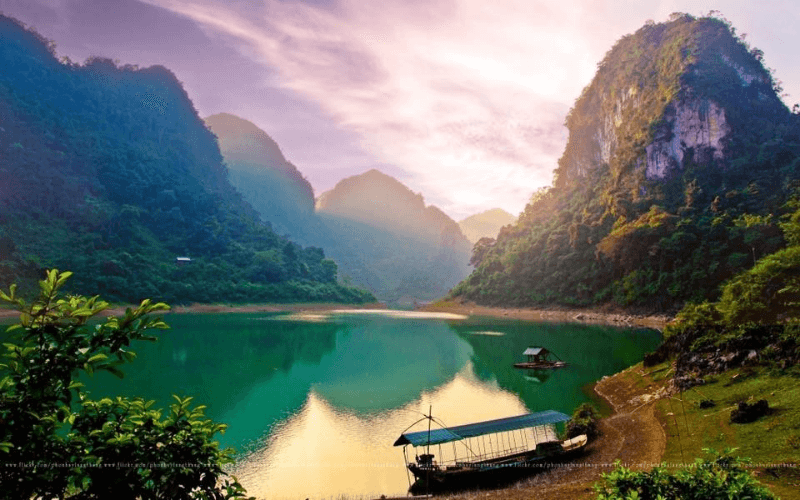
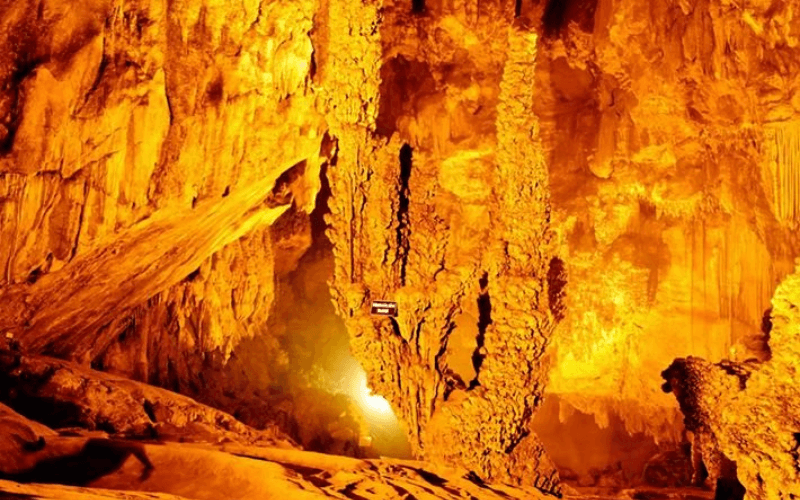
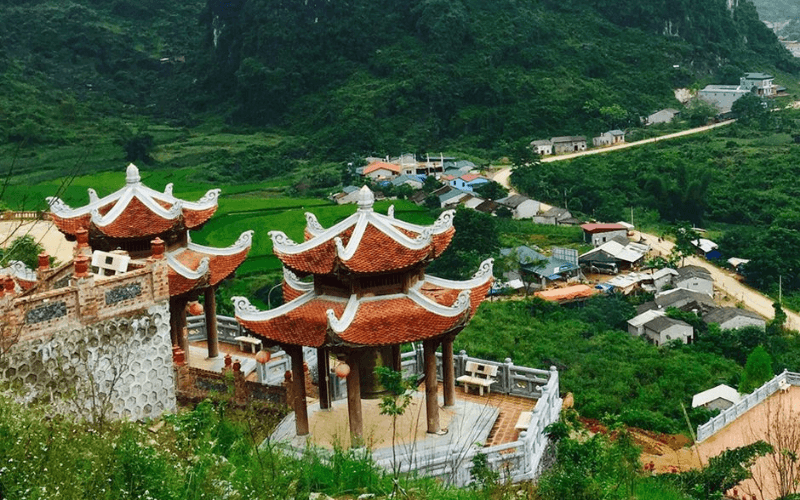
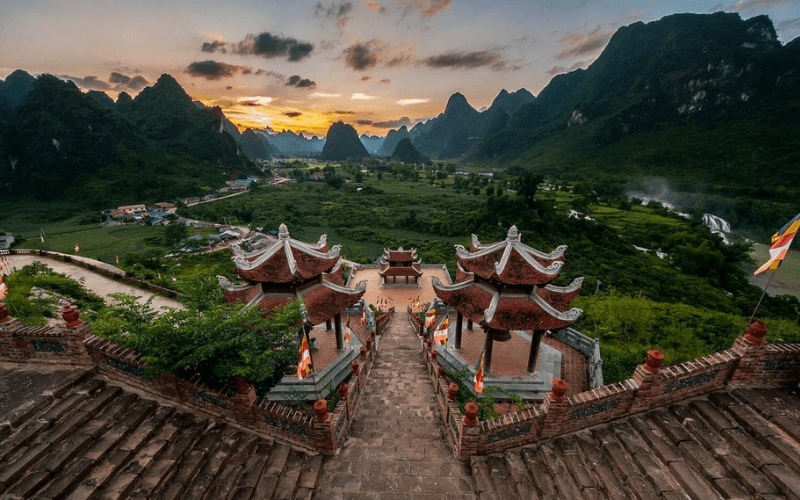
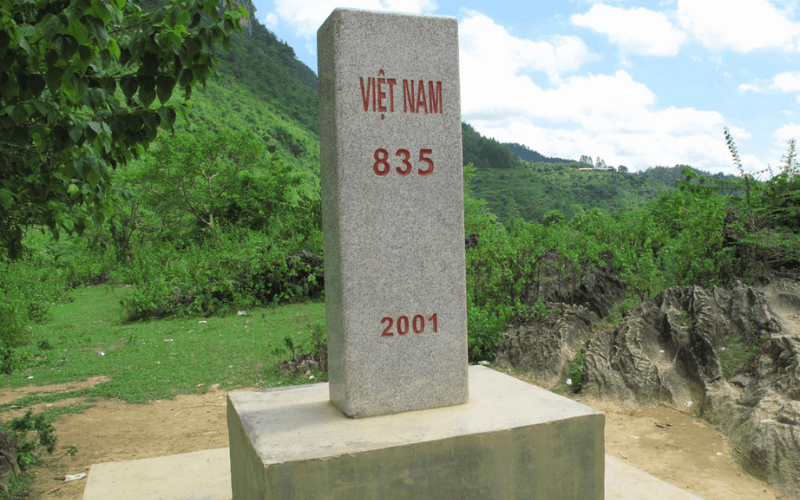
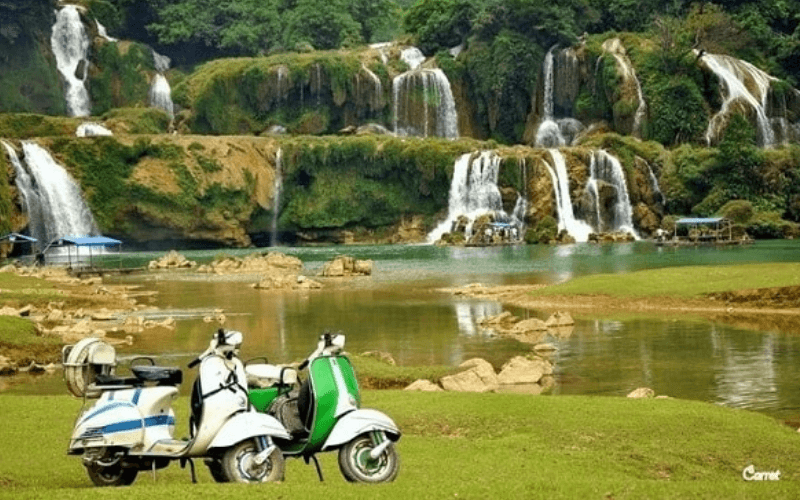

Wonderful web site. Plenty of helpful information here.
I am sending it to a few friends ans also sharing in delicious.
And certainly, thanks for your effort!